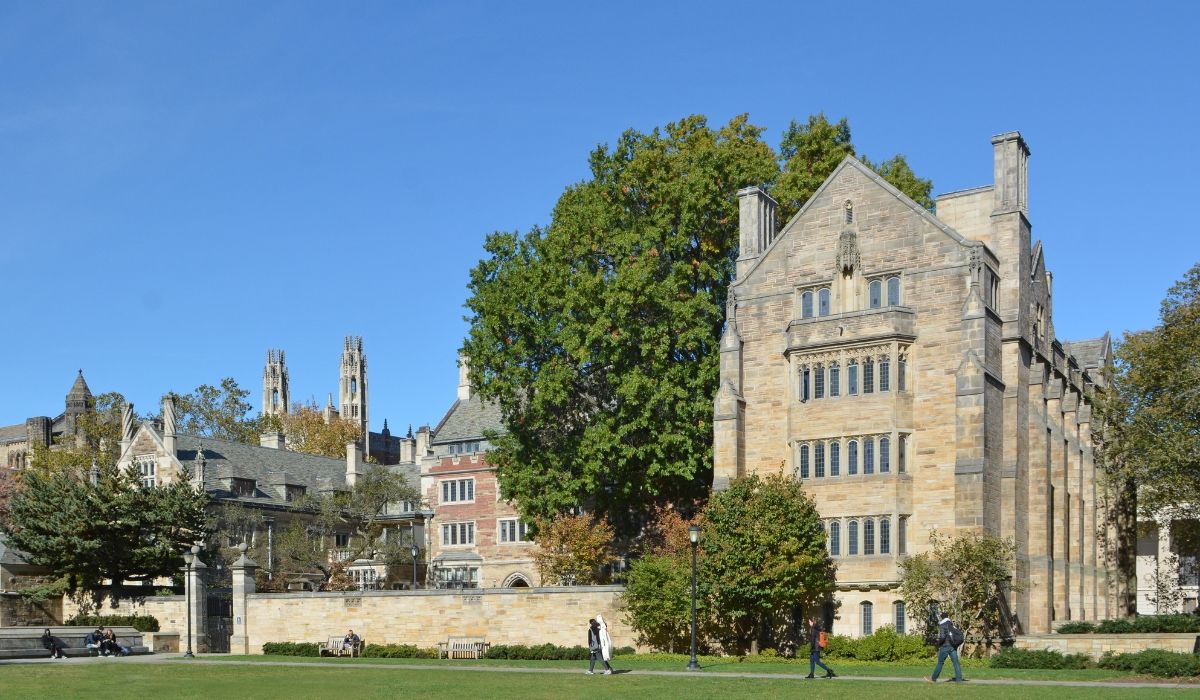Studying in the US? A Guide for Canadian Students
Pay for US tuition from Canada without high bank fees. Canadian students can save up to 4% on exchange rates and transfer tuition in USD securely with MTFX- better than banks and fast enough to meet university deadlines.
Embarking on an academic journey from Canada to the US is an exciting opportunity for personal and professional growth, but studying abroad comes with its challenges. As a Canadian studying in the USA, you’ll have the chance to immerse yourself in a new cultural and academic environment, exploring some of the best US universities for Canadian students. From navigating the complexities of the US education system to adapting to a different cultural setting and managing finances or international payments, careful preparation is key to making your experience smooth and rewarding. Ready to take on the adventure? It all starts with planning and informed decision-making.
Can a Canadian citizen study in the USA?
Absolutely! Canadian citizens can study in the US, and the process is more straightforward than you might think. While Canadians don’t need a visa to visit the US, studying requires an F-1 student visa, which you can apply for after being accepted to a US institution. Once you receive your I-20 form from the school, you'll schedule a visa appointment and pay the SEVIS fee. Studying in the US offers access to world-class universities, diverse academic programs, and opportunities for personal and professional growth. Just ensure you have figured out the right study abroad program, budget for tuition, living expenses, and health insurance, as costs can vary widely.
Why study in the US as a Canadian?
Exploring the idea of studying abroad is a major step, and for Canadians, the US offers an unbeatable combination of world-class education, cultural diversity, and career opportunities. Studying in the US as a Canadian is more than just earning a degree—it’s about embracing new experiences, expanding your skill set, and building a foundation for a bright future. With proper planning and preparation, this journey can be one of the most rewarding decisions you’ll ever make.
Access to globally recognized universities
The US is home to some of the world’s best universities, known for cutting-edge research, state-of-the-art facilities, and diverse academic programs. For Canadians studying in the USA, institutions like Harvard, Stanford, or UCLA provide a chance to learn from esteemed faculty while building a global network of peers.
Wide range of academic opportunities
Whether you’re pursuing a degree in business, engineering, arts, or sciences, the US offers programs tailored to almost every interest. As a Canadian, studying in the USA means you can choose from thousands of schools, each with unique strengths and specialized courses that may not be available back home.
Experience cultural and professional growth
Studying in the US exposes Canadian students to a diverse cultural environment, helping you broaden your horizons and develop a global perspective. Beyond academics, internships and co-op programs at leading US companies give Canadian students real-world experience and a competitive edge.
Proximity and ease of travel
One of the perks of being a Canadian studying in the USA is the convenience of proximity. With a shared border, traveling home during holidays or breaks is more affordable and less time-consuming than for many international students.
Build a stronger career foundation
US degrees are highly respected worldwide and can open doors to exciting career opportunities. Many Canadian students studying in the USA find that their education helps them stand out in competitive job markets, both in Canada and internationally.

US education system - how does it differ from Canada?
The US and Canadian education systems share many similarities, but there are several key differences that Canadian students should be aware of when considering studying in the United States:
- US institutions may offer a wider variety of degree programs and majors, including more options for interdisciplinary studies.
- US institutions might require standardized tests like the SAT or ACT, alongside essays, letters of recommendation, and extracurricular activity records.
- US universities often require students to complete general education courses outside their major for a well-rounded education.
- Tuition costs in the US vary widely and are generally higher than in Canada, especially for international students.
- The US uses a grading system that typically ranges from A-F, with grade point average (GPA) calculation variations.
- US universities often have a more pronounced campus culture, with extensive on-campus housing, vibrant life, and a focus on sports.
How to study in the US as a Canadian?
The United States is a vast, 50-state country offering countless opportunities for education. As a Canadian studying in the USA, you can explore a wide variety of locations, each with its unique charm and academic offerings. You might even grab a map, close your eyes, and point to discover a nearby place to study. With so many top study-abroad destinations to choose from, finding the best fit may feel like searching for a needle in a haystack. However, learning how to study in the US as a Canadian becomes simpler when you focus on your budget, ideal location, financial aid opportunities, and proximity to family or friends living in the US. By aligning these factors with your lifestyle and academic goals, you can pinpoint the perfect destination to make your educational journey truly rewarding.
With a wide range of colleges and universities offering diverse programs and campus experiences, finding the perfect fit requires careful consideration of several key factors:
Academic programs and majors: Ensure the institutions you're considering offer good programs in your area of interest. Research the faculty, curriculum, departmental resources, and opportunities for research or internships in your chosen field.
Accreditation: Verify that a recognized accrediting agency accredits the institution. Accreditation ensures that the education provided meets specific quality standards and that employers and other institutions will recognize degrees.
Location and campus setting: Consider the geographical location, climate, proximity to major cities, and the overall environment. Whether it's an urban, suburban, or rural campus can significantly affect your college experience.
Cost and financial considerations: Understand the total cost of attendance, including tuition, room and board, fees, and other expenses. Also, consider the challenge of making international payments and CAD/USD conversion.
Support services for international students: Check for services that assist international students with academic advising, visa issues, language support, and cultural adjustment.
Housing options: Consider the housing options available, including on-campus dormitories, off-campus apartments, and the possibility of living with a host family.
You can also streamline your search in the following ways:
- Use US school search tools or check school profiles to find top options under one roof.
- Browse US state guides to learn more about the 50 states and the American way of life.
- Get recommendations from family and friends or online communities.
- If possible, visit the USA as a tourist to explore the local area and campus for your top options.
Questions to ask
- Is the school a certified Student and Exchange Visitor Program (SEVP)?
- Does it offer programs or extracurricular options I'm interested in?
- What's the vibe or school culture like?
- What's the tuition range and location?
- Does the school match what I'm looking for regarding religious affiliation, diversity on campus, availability of public transport, and safety?
Tuition payments and foreign exchange challenges
International payment and foreign exchange challenges are significant considerations for Canadian students studying in the United States. Managing tuition payments, living expenses, and other financial transactions across borders involves managing a combination of exchange rates, banking regulations, and transaction fees. Here are some key challenges and considerations:
Exchange rate fluctuations: Currency exchange rates between the Canadian dollar (CAD) and the US dollar (USD) can vary significantly over time. These fluctuations can affect the actual cost of tuition and living expenses, making financial planning unpredictable.
International transaction fees: Many Canadian bank accounts and credit cards charge high fees for international transactions, including conversion and ATM withdrawal fees. These can add up over time, increasing overall expenses.
Payment deadlines and processing times: International payments can have longer processing times, which may risk missing payment deadlines for tuition and housing. Planning and making payments well in advance is essential to avoid late fees or enrollment holds.
Budgeting and financial management: Creating a comprehensive budget that accounts for exchange rates, banking fees, and the cost of living in the US is crucial. Regularly monitoring and adjusting this budget is necessary to manage finances effectively.
Why does the USD/CAD exchange rate matter for Canadian students?
The USD/CAD exchange rate plays a crucial role for Canadians studying in the USA because it directly impacts the cost of tuition, living expenses, and other financial commitments. A weaker Canadian dollar means higher costs for tuition fees, housing, and daily living, making budgeting essential. For those applying to an American university from Canada, understanding the exchange rate can help plan finances and explore options like scholarships or financial aid. Monitoring the USD/CAD rate and using efficient money transfer services ensures Canadian students minimize currency exchange costs while studying at the best US universities for Canadian students.
You can also set up CAD to USD rate alerts and get instant notifications when the rate hits your desired target. This way you can lock in a favourable CAD/USD exchange rate and save hundreds of dollars every time you send money to the US from Canada.
How MTFX can help Canadians studying in the US?
MTFX, a leading foreign exchange and global payments solutions provider, can be a valuable resource for Canadian students studying in the United States by addressing many international payment and foreign exchange challenges. Here's how MTFX can assist:
You get better-than-bank exchange rates
MTFX offers better exchange rates than your bank, which can result in significant tuition and living expenses savings when converting Canadian dollars to US dollars. This can also help you mitigate the impact of fluctuating exchange rates.
You pay lower transaction fees
Unlike traditional banks, MTFX charges lower transaction fees for international transfers. This can reduce the cost of sending money abroad for tuition payments, accommodation, and other expenses.
You ensure fast and secure transactions
MTFX provides fast and secure international money transfers, ensuring that your tuition and other payments are made on time and reducing the risk of missing important deadlines due to processing delays.
You simplify the payment process
The MTFX online platform offers a convenient way to manage and track international payments, making it easier for students to handle their financial transactions from anywhere, at any time.
You get tailored payment solutions
We can provide tailored solutions to meet the specific needs of Canadian students in the US, including recurring payments for tuition and regular transfers for living expenses.
You reduce currency fluctuation risk
MTFX offers tools like market orders to manage foreign exchange risk. These tools can help lock in exchange rates or execute trades at desired rates, providing more predictability in education expenses.
Best US universities for Canadian students
Looking for recommendations for the best places to study in the USA? It all boils down to your preferences and requirements. If educational attainment, graduation rates, college debt, and tuition costs are your top priority, consider states like Florida, Washington, California, Wyoming, and Colorado, which have higher education rankings in this department.
The truth is that every US state has its own merits, including New York, Massachusetts, Texas, Illinois, and more. You can investigate each state based on cost, scenery, culture, and other extras to determine what's best for you. Here's a look at some highly regarded universities and colleges that regularly feature on the list of top places to study for international students.
Harvard University
Located in Cambridge, Massachusetts, Harvard is synonymous with academic excellence and boasts a global reputation for producing leaders across industries. Known for its rigorous academics, illustrious faculty, and extensive alumni network, Harvard provides Canadian students with unparalleled resources and opportunities. The university offers a rich cultural environment, blending tradition with cutting-edge innovation. For those applying to an American university from Canada, Harvard's financial aid programs and support systems make it a top choice among the best US universities for Canadian students.
Stanford University
In the heart of Silicon Valley, Stanford stands out for its entrepreneurial spirit and groundbreaking research. The university fosters innovation through strong programs in engineering, computer science, business, and humanities, making it ideal for Canadians with ambitions in technology or startups. As one of the best US universities for Canadian students, Stanford offers access to industry leaders, internships, and a network that’s unmatched globally. Applying to an American university from Canada can be intimidating, but Stanford’s welcoming campus and vibrant community ease the transition for international students.
Massachusetts Institute of Technology (MIT)
MIT, located in Cambridge, Massachusetts, is a dream destination for STEM enthusiasts. Renowned for its research and education in science, technology, engineering, and mathematics, MIT positions Canadian students at the forefront of global innovation. With state-of-the-art labs and a collaborative culture, it’s among the best US universities for Canadian students aiming to make groundbreaking discoveries. The process of applying to an American university from Canada is well-supported by MIT’s international office, offering guidance on admissions and financial aid.
University of California, Berkeley
UC Berkeley is celebrated for its vibrant campus life and commitment to social justice and innovation. Known for strong programs in business, law, engineering, and the humanities, it provides a dynamic academic environment for Canadian students. Its location near San Francisco adds a wealth of cultural and professional opportunities, making it a prime choice for those applying to an American university from Canada. As one of the best US universities for Canadian students, Berkeley offers scholarships and resources tailored to international students.
Columbia University
Nestled in the heart of New York City, Columbia combines world-class academics with the vibrancy of urban life. Known for its programs in arts, sciences, and humanities, Columbia attracts students who thrive in fast-paced, diverse environments. Canadian students benefit from its global perspective and career opportunities in the city that never sleeps. For those applying to an American university from Canada, Columbia’s robust international student services make the transition seamless. Its reputation as one of the best US universities for Canadian students is well-deserved.
Yale University
With its picturesque campus in New Haven, Connecticut, Yale offers Canadian students an enriching academic and cultural experience. Known for its excellent programs in law, arts, humanities, and sciences, Yale’s close-knit community fosters collaboration and creativity. The university provides extensive support for international students applying to an American university from Canada, making it a standout choice among the best US universities for Canadian students. Extracurricular opportunities and research programs further enhance the Yale experience.
Princeton University
Princeton, located in New Jersey, is celebrated for its undergraduate-focused education and emphasis on independent research. With small class sizes and personalized mentorship, it offers a unique academic experience for Canadian students seeking a more intimate learning environment. Princeton’s generous financial aid and resources make it one of the best US universities for Canadian students. The process of applying to an American university from Canada is streamlined with support from Princeton’s admissions and international offices, ensuring a smooth transition to its prestigious campus.
Applying to an American university from Canada
Each university in the US may have different application requirements. Standard components include the application form, high school transcripts, standardized test scores (SAT or ACT), essays, letters of recommendation, and extracurricular activities. Check if the universities you're applying to require additional tests, such as SAT Subject Tests or English proficiency tests like TOEFL or IELTS, especially if your primary language of instruction was not English.
- Apply and be accepted by a US SEVIS-accredited school or exchange program. The school will issue an I-20 Certificate of Eligibility.
- Register with SEVIS (Student and Exchange Visitor Information System) and obtain a SEVIS number with a first-time registration fee.
- Ensure to obtain an F-1 or M-1 status at the border after being accepted by a SEVIS-accredited school. The type of status (F-1 for academic studies or M-1 for vocational studies) will depend on the nature of the study program.
- Remember to obtain your Form I-94 each time you cross the border, proving your legal visitor status.
Checklist for Canadian students looking to study in the US
• Understand each university's specific application requirements.
• Check deadlines for applications.
• Register for and take required standardized tests (SAT/ACT).
• Write personal statements/essays.
• Request high school transcripts to be sent to universities.
• Obtain letters of recommendation from teachers or counsellors.
• Prepare a resume or list of extracurricular activities and achievements.
• Research scholarship, grant, and financial aid opportunities.
• Prepare financial documents required for the application and visa process.
• Submit the application(s) before the deadline.
Cost of education in the US
Studying in the US can be a highly rewarding experience, but like all good things in life, it costs money. You can expect to include the following in your budget when planning to study in the US:
SEVIS fee: The SEVIS fee is subject to change. It's a standard requirement for all international students in the US. Fortunately, it's a one-time expense.
Travel expenses include the cost of your plane ticket and transportation once you arrive in the US. Your transportation costs might be higher if you live off-campus.
Health insurance: Some colleges and universities require international students to purchase health insurance. The US doesn't have nationalized healthcare, unlike Canada. Instead, the system is more privatized, and you're responsible for covering your medical costs. Your two main options are purchasing student health insurance from your school or a reputable private company. Some Canadian companies also offer health coverage for Canadians studying abroad. The cost will vary based on the required coverage per year.
Tuition and living expenses: This often represents the highest cost of studying abroad. You can expect tuition in the USA to be significantly higher compared to Canada. However, the total costs depend on the program you're learning, your chosen school, and your location. Living expenses typically include groceries, food, books, study materials, and other basic or daily expenses. To manage these costs efficiently, many Canadian students rely on secure international transfers for overseas studies through MTFX.
Room and board: Opting for on-campus residence is often cheaper, though you'll have to share with other students. You can also choose a shared non-campus residence, which varies in cost based on location.
Unexpected expenses: It's always wise to budget for unforeseen expenses in case of emergencies, such as health threats and family emergencies that require you to travel home.
So, how much does this all add up to? There's no one-size-fits-all answer because each student's experience is unique. Generally, the costs can range between $40,000 and $75,000 or more depending on the course and whether it's a private or public college.
Admittedly, the cost of studying in the US can add up. Where possible, apply tips such as buying used textbooks, cooking instead of ordering out, looking for discounts when shopping, and looking for discounted tuition rates.
Most affordable universities in the USA for Canadian students
For Canadian students seeking affordable education in the US, several universities offer exceptional value without compromising on quality. Schools like Brigham Young University–Idaho, the University of Wisconsin–Milwaukee Flex, and Columbia Southern University stand out as cost-effective options. Other top choices include Brigham Young University–Hawaii and the University of the People, which provides flexible online degree programs. These universities cater to diverse academic interests while keeping costs manageable, making them attractive for Canadians studying in the USA. By focusing on affordability and quality, Canadian students can achieve their academic goals without breaking the bank.
Paying for your overseas education
For most Canadians, the wholesome experience of studying in the US comes with a five-figure price tag. Fortunately, there are ways to reduce the total costs or get the extra cash you need to cover essential expenses. You can look for scholarships and grants. The Canadian government offers student loans, bursaries, and scholarships to Canadians wanting to study abroad, while some provinces provide grants. You can also contact your school to discuss financial aid options for international students.
If you need to take out a loan, remember that US student federal loans are unavailable to Canadians. Instead, you can apply for a private loan with a US lender, though you might need a cosigner who's a qualifying US citizen. You can also check with your local Canadian banks to see if they offer a suitable financial product.

Focus on education and let MTFX take care of your international payments
Wrapping up and managing money is a big part of studying in the US for Canadian students. Paying for tuition fees and living costs means dealing with money across borders, which can be tricky. It's essential to have a good plan for these international payments to make sure everything goes smoothly and doesn't cost too much.
Using an expert foreign exchange service like MTFX can help. We offer bank-beating rates for exchanging money and charge less for sending money to the US. Planning, watching for changes in exchange rates, and picking the right service can save you money and hassle. So, as you prepare for your adventure in the US, remember that wise money management is critical. By tackling money matters wisely, you can spend more time enjoying your studies and new experiences in the US.
Create your student account today on MTFX and start saving up to thousands of dollars on CAD to USD conversions and global money transfers to the US.
FAQs
1. How can I send tuition payments from Canada to a US university in USD?
Use MTFX to convert CAD to USD and transfer funds directly to US schools—faster, safer, and up to 4% cheaper than banks.
2. What’s the best exchange rate I can get for CAD to USD tuition transfers?
MTFX offers real-time exchange rates with minimal markup. Avoid the inflated rates charged by banks and money transfer platforms.
3. Can I lock in today’s CAD to USD exchange rate for future tuition payments?
With an MTFX rate alert feature, you can fix your exchange rate for upcoming semesters to avoid currency swings.
4. How fast are MTFX tuition payments processed to US universities?
Transfers are usually completed within 1–2 business days, helping students avoid late fees or missed deadlines.
5. Is it cheaper to use MTFX instead of my Canadian bank?
MTFX offers significantly better FX rates, lower fees, and full transparency—no hidden charges or poor spreads.
6. Can my parents or sponsors make tuition payments on my behalf?
Absolutely. MTFX supports third-party tuition transfers from Canadian accounts, making it ideal for parents or guardians.
7. Can I automate recurring tuition payments through MTFX?
Yes, set scheduled transfers to match your academic billing cycle and avoid manual payments each term.
8. Is MTFX a regulated provider for cross-border tuition transfers?
Yes, MTFX is fully regulated by FINTRAC and trusted by over 75,000 clients for global tuition and personal transfers. Trust MTFX for global payments.
9. How do I track my tuition transfer once it’s sent?
Your MTFX account provides real-time tracking, confirmations and digital receipts for every transfer.
10. Can I pay in advance for the full academic year using MTFX?
Yes, you can send full-year tuition payments and even lock in favourable rates for the entire amount in one transaction.
Create your student account today on MTFX and start saving up to thousands of dollars on CAD to USD conversions and global money transfers to the US.
Related Blogs
Stay ahead with fresh perspectives, expert tips, and inspiring stories.

Keep updated
Make informed decisions
Access tools to help you track, manage, and simplify your global payments.
Currency market updates
Track key currency movements and plan your transfers with confidence.
Create an account today
Start today, and let us take the hassle out of overseas transfers.








